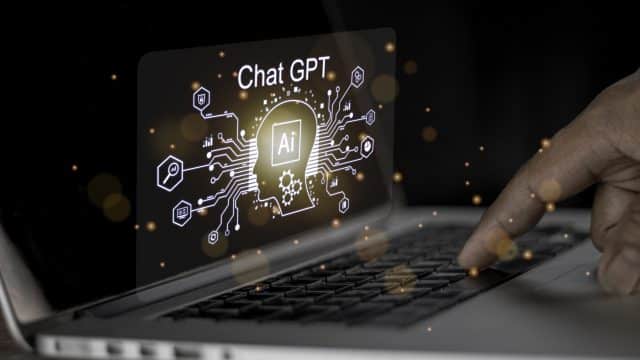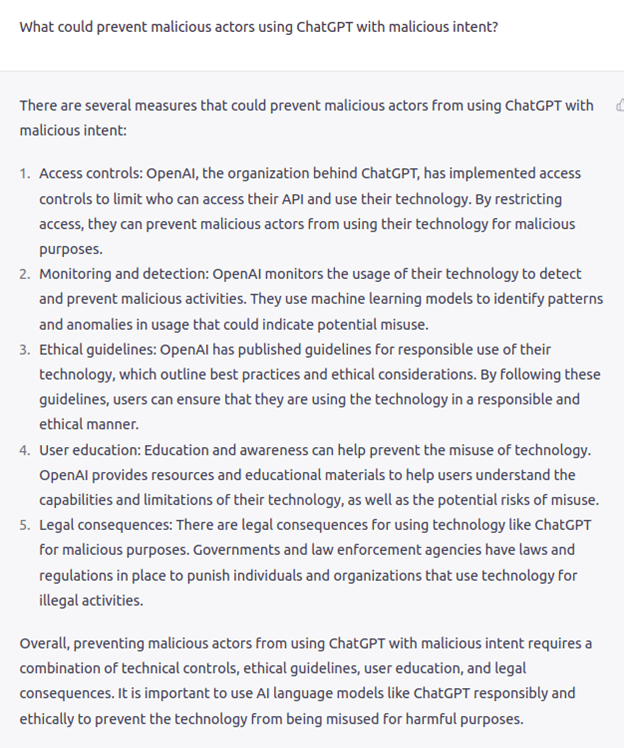The risk and reward of ChatGPT in cybersecurity

Unless you’ve been on a retreat in some far-flung location with no internet access for the past few months, chances are you’re well aware of how much hype and fear there’s been around ChatGPT, the artificial intelligence (AI) chatbot developed by OpenAI. Maybe you’ve seen articles about academics and teachers worrying that it’ll make cheating easier than ever. On the other side of the coin, you might have seen the articles evangelizing all of ChatGPT’s potential applications.
Alternatively, you may have been tickled by some of the more esoteric examples of people using the tool. One user, for example, got it to write an instruction guide for removing peanut butter sandwiches from a VCR in the style of the King James Bible. Another asked it to write a song in the style of Nick Cave; the singer was less than enthused about the results.
But amidst all that hype and discussion, there hasn’t been nearly enough attention paid to the risks and rewards that AI tools like ChatGPT present in the cybersecurity arena.
Understanding ChatGPT
In order to get a clearer idea of what those risks and rewards look like, it’s important to get a better understanding of what ChatGPT is and what it’s capable of.
ChatGPT (now in its latest version, ChatGPT-4, released on March 14th, 2023) is part of a larger family of AI tools developed by the US-based company OpenAI. While it’s officially called a chatbot, that doesn’t quite cover its versatility. Trained using both supervised and reinforcement learning techniques, it can do far more than most chatbots. As part of its responses, it can generate content based on all the information it was trained on. That information includes general knowledge as well as programming languages and code. As a result, it can, for instance, simulate an entire chat room; play games like tic-tac-toe; and simulate an ATM.
More importantly, for businesses and other large organizations, it can help improve businesses’ customer service through more personalized, accurate messaging. It can even write and debug computer programs. Some of those, and other, features mean that it could both be a cybersecurity ally and a threat.
Education, filtering, and bolstering defenses
On the positive front, there’s a lot to be said for ChatGPT. One of the most valuable roles it could play is also one of the most simple: spotting phishing. Organizations could entrench a habit in their employees whereby they use ChatGPT to determine if any content they’re not sure about is phishing or if it was generated with malicious intent.
That’s important because, for all the technological advances made in recent years, social engineering attacks like phishing remain one of the most effective forms of cybercrime. In fact, research shows that, of the cyberattacks successfully identified in the UK in 2022, 83 percent involved some form of phishing.
Of course, there are numerous other ways that ChatGPT can be used to bolster cybersecurity efforts. It could, for example, provide a degree of assistance to more junior security workers, whether that’s in communicating any issues they might have or helping them better understand the context of what they’re meant to be working on at any given point. It could also help under-resourced teams curate the latest threats and in identifying internal vulnerabilities.
The bad guys are using it too
But even as cybersecurity professionals explore ways of using ChatGPT to their advantage, cybercriminals are too. They might, for example, make use of its ability to generate malicious code. Alternatively, they might use it to generate content that appears to be human-generated, potentially used to trick users into clicking on malicious links, unknowingly leading to dangerous consequences.
Some are even using ChatGPT to convincingly mimic legitimate AI assistants on corporate websites, opening up a new avenue in the social engineering battlefront. Remember, the success of cybercriminals largely depends on being able to target as many possible vulnerabilities, as frequently and quickly as possible. AI tools like ChatGPT allow them to do that by essentially acting as a supercharged assistant that can help create all assets needed for malicious campaigns.
Use the tools available
It should be clear then that, if cybercriminals are using ChatGPT and other AI tools to enhance their attacks, your security team should also be using them to bolster your cybersecurity efforts. Fortunately, you don’t have to do it alone.
The right security provider won’t just engage in constant research around how cybercriminals are using the latest technologies to enhance their attacks but also how those technologies can be used to improve threat detection, prevention, and defense. And with the damage that a cybersecurity attack can do to your critical infrastructure, it’s something they should be proactively telling you about too.
ChatGPT-4
With the latest release of ChatGPT (ChatGPT-4), OpenAI has made available the latest and most powerful conversational model, also introducing more controls to prevent its misuse. We asked ChatGPT "What could prevent malicious actors using ChatGPT with malicious intent" it and this was the answer:

So ChatGPT went ahead and enumerated all of the measures that OpenAI has taken in order to prevent its misuse. OpenAI in the release blog of ChatGPT-4 explained how this model is supposedly safer than its predecessors: "We spent 6 months making GPT-4 safer and more aligned. GPT-4 is 82 percent less likely to respond to requests for disallowed content and 40 percent more likely to produce factual responses than GPT-3.5 on our internal evaluations".
So all indicates that the right measures continue being improved to avoid its misuse, but as we all know the bad guys will continue to find ways to overcome those limitations as the model is more widely used and understood.
Image credit: [email protected]/depositphotos.com
JP Perez-Etchegoyen is CTO of Onapsis.